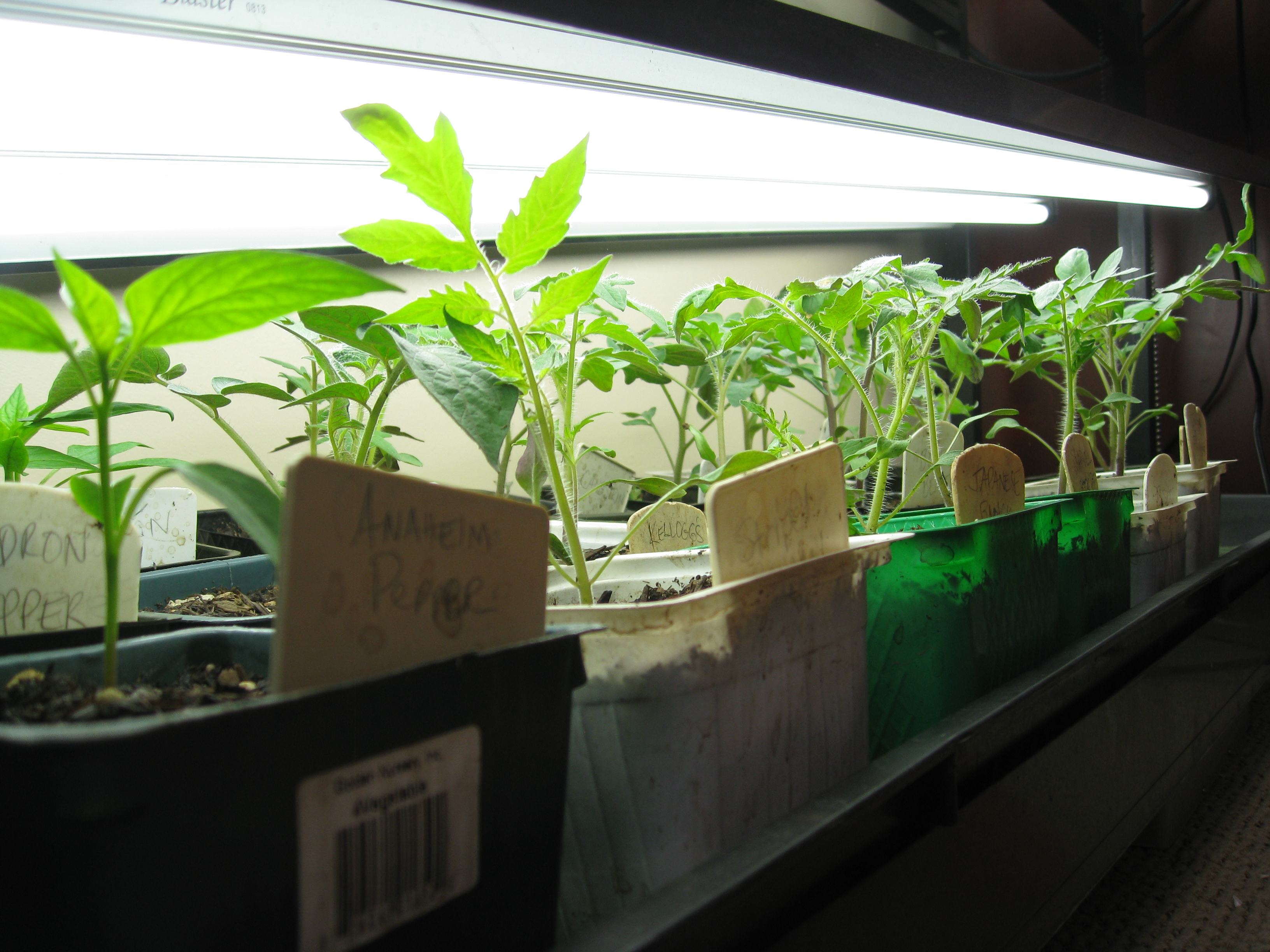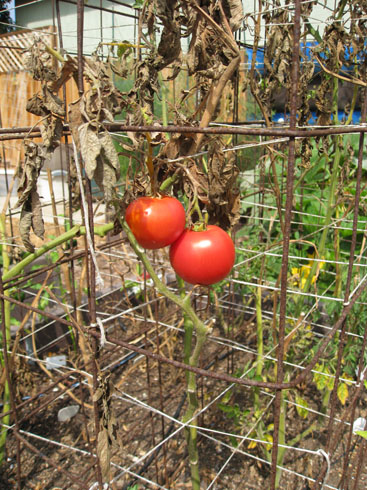![]()
In this issue:
- January in the Garden
- Seed-Starting Tips
- Gardenerd Tip of the Month: Help My Tomatoes
- Gardenerd Product of the Month: Gardenerd Women’s Dark Hooded Sweatshirt
1. January in the Garden
Welcome to a new year, Gardenerds. It’s another chance to try new seed varieties, to learn a new skill, and to build stellar soil. If you aren’t composting already, make 2017 the year to begin! If you already compost, try seed-saving, and if you do that already, try a new challenge to keep 2017 interesting. This year I plan to get over my fear of grafting. Let’s see how it goes!
In our test garden, we’re harvesting mustard greens, arugula, cilantro, kale, radishes, shelling peas and parsley. This cool weather is perfect for those crops that usually bolt to seed in heat. Soon we’ll be starting seeds for warm-weather crops, but now is a great time to sow seeds for more lettuces, and to plant root crops if you have room.
For those in the Los Angeles area, I’ll be reading a snippet from my upcoming novel (set in a community garden, of course) this Sunday, January 22, 2017 at Vroman’s Bookstore in Pasadena at 2:00 p.m. as part of IWOSC Reads Its Own. 15 authors will read from their books (published or in the works). Come enjoy a diverse experience ranging from poetry to self-help to fiction. Copies of Gardening for Geeks will be for sale for $17 each. Hope to see you there.
Happy Gardening,
Christy
2. Seed-Starting Tips

Soon it will be time to start seeds for hot weather crops. Depending on where you live, tomato season starts as early as late-March or as late as late-May. Growing tomatoes from seed is easy. Just give them plenty of direct light (we use grow lights on a timer set for 12-14 hours per day), feed them every couple of weeks, and water them when the soil dries down (keep soil evenly moist until they sprout first). That’s true of most seeds started indoors. Here are our favorite tips on seed-starting for spring:
Seed-starting for Fall – for those growing cool weather crops in spring, this is for you.
Spring Garden Planting Guide – Find out what to grow this season.
Growing from seed is rewarding in more ways than one. You control the entire process, and the world is your oyster as far as available varieties. Open those seed catalogs and get started!
3. Gardenerd Tip of the Month – Help My Tomatoes
Our latest question from Ask Gardenerd comes from Fran Blackwell:
“I have been growing tomatoes for years with good results. Last year, however, my plants looked well at first, but by May were struggling. I got very few tomatoes. I am wondering if it was the soil or the weather that caused it. Right now I am starting to prepare for the new season. I was considering adding organic rock dust in addition to the chicken manure, and vermiculite, and gromulch I usually add.”
Sorry to hear about your tomato troubles, Fran. It could be a combination of factors that caused your tomatoes to peter out. Here are our thoughts:
Plant in a new location – if you’ve been planting in the same spot year after year, and now you have diseases, it’s time to rotate the location each year. The soil could also have…
Root-feeding nematodes – check the roots for galls (swollen knobs on the roots). If you have nematodes in the soil, you can add beneficial fungi and bacteria (in the form of high-quality compost or compost tea) to combat the problem. The American Phytopathological Society (APS) says:
“The most commonly used biological control agents [for root-feeding nematodes] are fungi and bacteria. There are many kinds of nematophagous (nematode-feeding) fungi. Some fungi use mycelial traps or sticky spores to capture nematodes, for example, Arthrobotrys spp. and Monacrosporium spp. Other fungi parasitize eggs and root-knot nematode females, e.g., Pochonia chlamydosporia and Paecilomyces lilacinus. The major bacterial antagonists are Pasteuria penetrans and species of Bacillus. Endospores of P. penetrans attach to the cuticle of a juvenile nematode, produce penetration structures that enter the nematode, and slowly consume it.”
It’s hard to know if your compost contains these beneficial bacteria and fungi, but generally speaking, adding high-quality, biologically-active compost to your soil will deliver members of these species to your soil. You can also try Biota Max probiotic to inoculate your soil with an arsenal of beneficial bacteria and fungi.
Blights or Powdery Mildew – if you live in a coastal or humid area, you are bought to end up with either powdery mildew, early or late blight at some point. Blight and other fungal infestations travel on moist air. The beneficial microbes mentioned above can help keep plants thriving under duress. Rotating crops is key in these situations. Prune your tomatoes to keep air circulation flowing and add a layer of mulch around plants to keep spores from splashing onto leaves.
Phosphorus & Potassium – green leafy growth in the beginning is brought on by sufficient nitrogen in soils. As fruit develops, plants require phosphorus and potassium to thrive. If your soils are depleted of these nutrients (or if they are bound up in the soil) plants will suffer. Healthy soil with plenty of beneficial microbes will unlock those nutrients and make them available to plants. You can supplement with organic veggie fertilizer during the flowering stages.
About additives – we hear wonderful things about rock dust. Re-mineralization of soils is often a saving grace for depleted soils. Just make sure you don’t over do it. Use only what is recommended. More is not better. Also, vermiculite should only be used in sandy soils that have trouble holding water. Vermiculite doesn’t add any nutrients, it is inert.
So we hope this long-winded answer helps you solve your tomato problems. Keep trying new things and focus on soil health. Good luck, Fran!
4. Gardenerd Product of the Month – Gardenerd Women’s Dark Hooded Sweatshirt
Stay warm this winter with the Gardenerd Women’s Dark Hooded Sweatshirt. Front pocket for keeping hands warm between the house and harvesting. Get yours today.
Women’s Dark Hooded Sweatshirt

-
Stay tuned for more tips and tidbits from Gardenerd.com. Happy Gardening!

Search our archives here.

